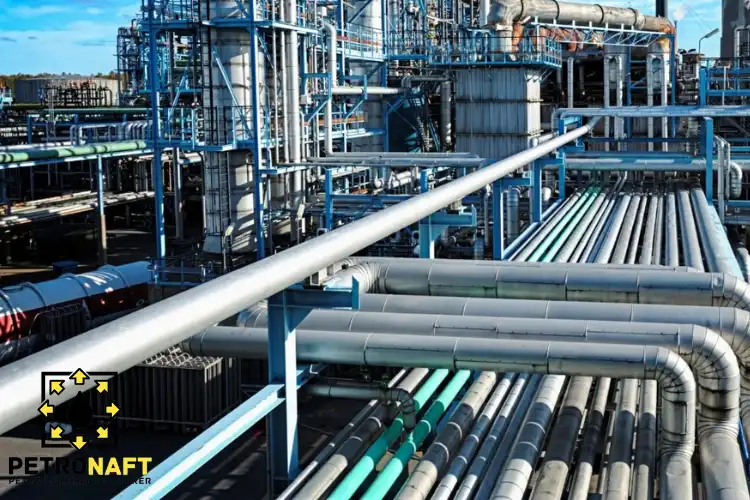Content Overview
The Impact of Bitumen Blowing Technology on Modern Industries
The advent of bitumen blowing technology has significantly influenced modern industries, providing enhanced solutions for road construction, roofing materials, and waterproofing systems. We will discuss the fundamental principles underlying this innovative technology, its manufacturing process, and the wide range of industries that have adopted it. Furthermore, we will touch upon the current developments and future potential of this versatile material.
Introduction to Bitumen Blowing Technology
Bitumen blowing technology, also known as air-blown or oxidized bitumen, refers to a process in which air is blown through bitumen at high temperatures. This reaction causes the bitumen to oxidize and increase in viscosity, resulting in a material with improved resistance to temperature fluctuations and weathering. The versatility of this material makes it highly suitable for various applications across multiple industries.
The Science Behind Bitumen Blowing
The bitumen blowing process involves the controlled injection of air into bitumen at elevated temperatures, typically between 220°C and 290°C. During this process, the air reacts with the bitumen’s hydrocarbons, leading to the formation of larger, more complex molecules. This results in an increase in the bitumen’s viscosity, softening point, and overall durability. The end product, known as oxidized or air-blown bitumen, exhibits enhanced performance characteristics compared to conventional bitumen.
Bitumen Blowing Technology in Road Construction
One of the primary applications of bitumen blowing technology is in the road construction industry. Oxidized bitumen offers improved adhesion, elasticity, and resistance to deformation, making it a preferred choice for constructing and maintaining roads, highways, and airport runways. The enhanced performance characteristics of air-blown bitumen contribute to the longevity of road surfaces and reduce the need for frequent maintenance.
Roofing and Waterproofing Applications
The roofing industry has embraced bitumen blowing technology due to the material’s exceptional waterproofing properties. Oxidized bitumen is commonly used in the production of roofing membranes, shingles, and other waterproofing materials. The increased viscosity and durability of air-blown bitumen make it an ideal material for creating long-lasting, weather-resistant roofing systems.
Other Industries Benefitting from Bitumen Blowing Technology
Aside from road construction and roofing, bitumen blowing technology has found applications in other industries as well. These include:
- Pipe Coating: Oxidized bitumen is used as a protective coating for pipelines, providing corrosion resistance and ensuring the longevity of the infrastructure.
- Paint and Varnish: Air-blown bitumen serves as a raw material for the production of paints and varnishes, offering excellent adhesion and weather resistance.
- Industrial Insulation: Oxidized bitumen is employed in the production of insulation materials for various industrial applications, such as thermal insulation for buildings and soundproofing systems.
Advancements and Future Prospects
Continuous research and development efforts in the field of bitumen blowing technology have led to numerous advancements, such as the introduction of polymer-modified bitumen, which offers enhanced performance characteristics and improved flexibility at low temperatures. Other developments include the use of renewable resources and waste materials for bitumen production, reflecting a growing emphasis on sustainability within the industry.
Moving forward, the future of bitumen blowing technology appears promising. As industries continue to demand higher performance materials, the potential for further improvements and innovations in this field is vast. There is ongoing research into novel applications of oxidized bitumen in areas such as carbon capture and storage, energy storage, and even electronics, making bitumen blowing technology a cornerstone of future industrial development.
Conclusion
Bitumen blowing technology, often referred to as air-blown or oxidized bitumen production, has revolutionized numerous industries. Its enhanced properties, such as increased viscosity, higher softening point, and improved weather resistance, have made it a preferred material in various applications, from road construction and roofing to pipe coating and industrial insulation.
The continual advancements in this field, coupled with its potential for future applications, highlight the importance of bitumen blowing technology in the modern industrial landscape. As research and development efforts continue, we can anticipate further innovations and improvements in this versatile technology.
In conclusion, bitumen blowing technology serves as a testament to the progress of industrial science, proving that through innovation and ingenuity, we can create materials that not only meet our needs but also pave the way for a more sustainable future.
Purchasing This Product from Petro Naft
For more detailed information and to purchase the product discussed in this article, please visit the dedicated product page below. Alternatively, use the various communication channels provided on our site to register your purchase inquiry or take advantage of our expert guidance.
Prepared by the PetroNaft Co. research team.

